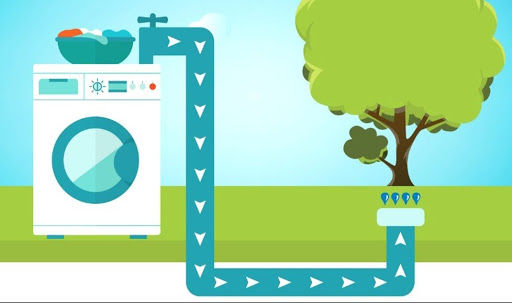Water is one of our planet's most precious resources, and conserving it has become a pressing issue in the face of climate change and growing water scarcity. Fortunately, advancements in technology are making it easier than ever to conserve water in different sectors. In this blog post, we will explore five sustainable water solutions that are helping to protect our water resources and promote sustainable development.
Rainwater Harvesting
Rainwater harvesting involves the use of a system that collects rainwater from rooftops and other surfaces, filters it to remove any debris, and stores it in tanks or underground reservoirs. The collected rainwater can be used for a variety of purposes such as watering

plants, flushing toilets, and even for drinking if properly treated. Rainwater harvesting not only reduces reliance on municipal water supplies but also helps to reduce the risk of flooding by diverting water away from drainage systems. One company working to increase the prevalence of rainwater harvesting systems is NeeRain. Based in India, they manufacture rainwater filters designed for the roofs of all types of buildings, which allow the user to capture filtered water for consumption. This device is particularly notable because of its patented design, including two levels of filtration, long performance life, and installation simplicity.

Greywater Recycling
Greywater recycling involves collecting and treating water from sources such as sinks, showers, and washing machines, and then reusing it for non-potable purposes such as watering plants or flushing toilets. Treated wastewater recycling is an effective way to remove contaminants, conserve water and reduce the demand for freshwater supplies. It is also a cost-effective solution that can save households and businesses money on their water bills. HydraLoop offers greywater recycling systems for both residential and commercial properties. Their system “collects, cleans, and re-uses the water from showers, baths, washing machines, air conditioning units” and more, and allows the user to consume the recycled water. While a HydraLoop isn’t required to start recycling your greywater, it is an option that offers this solution.
Water From Biomimicry

Biomimicry is a water recycling technique that uses natural phenomena, such as biopolymers and microalgae, to de-contaminate and recycles water for future use. In essence, biomimicry draws inspiration from nature to create sustainable solutions for water conservation. Water from biomimicry involves using technologies that mimic the way natural ecosystems manage water, such as the way plants and trees collect and distribute water. For instance, some biomimicry technologies use materials that are capable of capturing and storing water from the air, similar to the way some plants collect moisture from the atmosphere. Other biomimicry technologies are designed to imitate the way water is filtered and purified in natural systems, such as the way wetlands naturally treat wastewater. The Aquaporin Inside device is one of the latest biomimetic technologies that enables faster and more efficient water filtering. According to their website, it’s a biomimetic membrane that incorporates aquaporin proteins to filter water faster and more energy-efficiently than ever before.
Water Purification Systems
Water purification systems are a crucial technology for conserving water resources. Purification systems are important because contaminated surface water reduces the amount of water available for human consumption. According to the World Health Organization (WHO), around 1.8 billion people globally use a source of drinking water contaminated with fecal matter, highlighting the importance of these systems. Purification systems help to remove impurities and contaminants from water, making it safe for various uses such as drinking, cooking, and industrial processes. By providing clean water, these systems help to reduce the amount of water wasted due to contamination or unsafe drinking conditions. Dupont uses the latest electro-deionization technology in their water purification products. It is a reliable and cost-effective solution to eliminate ionized and ionizable contaminants in drinking water.
Irrigation Systems
Irrigation systems play a critical role in conserving water resources by efficiently delivering water to crops and plants. Traditional irrigation methods such as flood irrigation can be inefficient, leading to water loss through evaporation, runoff, and deep percolation. Irrigation systems for water conservation, on the other hand, use advanced technology to deliver water in a controlled and efficient manner. These systems can be designed to deliver water directly to the roots of plants, minimizing water loss due to evaporation and runoff. N-Drip is one of the world’s few water-saving technologies that farmers are using the save water. This IP-protected dripper can be installed and uninstalled quickly, improve yield, and save water. Powered by gravity, this technology is re-shaping farming as an alternative to flood irrigation.
Main Takeaways
The adoption of sustainable water solutions is crucial to ensure the availability of clean water for future generations. The five technologies discussed in this blog post are key examples of techniques that are revolutionizing the way we conserve water, and their implementation is essential for mitigating water scarcity and promoting sustainable development. The Grey Water Project is committed to promoting water conservation through education and advocacy. With the increasing challenges posed by water scarcity and climate change, it is more important than ever to work together to protect our water resources for future generations.

댓글